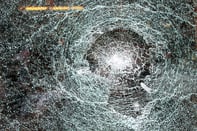Published on
Reality Education: Virtually the Future of Online and Distance Education

We are on the verge of crossing into the next wave of technological advancement where fantasy meets reality.
My favorite memories from childhood are moments when I was engulfed in the fantasy life of movie adaptations like The Wizard of Oz and Willy Wonka and the Chocolate Factory. I look back at those moments and wonder how far have we have come in reaching the level of fantasy that was real to these characters?
So far we have seen people literally cross above and beyond the rainbow thanks to the aviation and aerospace industries. We have potentially found water on Jupiter and sand deposits on Mars. Life on these planets is nowhere near the imaginative evergreen Land of Oz, yet a few of the inventions from those dream worlds have come true on planet Earth.
In Season 13 of American Idol, the spirit of Elvis was brought back to life using a technique called rotoscoping. In the likeness of the talking head of the Wizard in Oz, Elvis sang a live duet with Celine Deion. When I saw Elvis live on TV 37 years after his death, I knew we were another step closer to that dream world where anything and everything is possible—living in a world where simple belief in technology can sustain life. In the last few years, other stars like Michael Jackson have also come back to life, but now on stage!
As we are moving along this virtual road at an accelerated pace we are bringing technological advancements to life, and we are continuing to draw inspiration from arts and entertainment.
In the 1971 film Willy Wonka and the Chocolate Factory, we watch as rivals compete against one another for the right to inherit, own and operate the most famous candy land in the world. We all remember the little cowboy who wanted to be on TV in Willy Wonka’s TV Room. He sees the candy bar cross the airwaves into a television, and he just had to try the chocolate. It was real. It could be held, smelled and felt… and eaten. The cowboy’s excitement and Wonka’s research did not stop there. The cowboy was then transferred in the same way over the airwaves into a television. The only problem… Wonka was not using a big-screen TV. The transference, or transmission, shrunk the cowboy down to the size of a bag of Skittles. While this was an amusing scene from the movie, it has also become a reality.
We are two-thirds of the way to seeing this movie experience become a part of daily life.
We have been sending images from computers to 3D printers and watching as our creations come to life for many years. We can touch and feel these creations. We can even eat some of them thanks to inventions like Foodini. These are now consumer products for use in everyday life. We can also print lifelike figures of ourselves in a very similar way. However, Willy Wonka’s vision of actually passing people through technology is not yet a mainstream reality, but I predict it is already on the way and we’ll see it in the very near future. Moreover, I predict education will be one of the leading industries to advance this market.
We have seen educators use Smart Boards and Smart TVs. We have watched 3D Printers become common place in classrooms. We are teaching students how to use virtual technologies in everyday learning. We want to see our students build on the already wonderful inventions we have to use. We want to see dreams like Willy Wonka’s TV Room come to life. We want to see this become the ultimate advancement in online and distance education. With developments in virtual technologies we are taking the classroom experience from a physical experience to a sensory experience using mostly the eyes as portals to the mind. Headsets and goggles are being used in higher education classrooms to visually take students on field trips that would otherwise cost a fortune. There are now body suits that work with headgear to help create a virtual experience that cannot only be visualized, but felt. In online education, this technology can be used to produce a classroom experience that brings students together from around the globe in a full-body virtual learning environment. It is also a way to combat attrition and retain students in the competitive online marketplace. It creates an advantage for higher learning institutions by constructing a real classroom experience for those who opt for the distance learning option or cannot physically attend a classroom due to a temporary medical issue or physical disability. It is also a great option for students who have emotional or social anxiety and feel less welcomed in the normal classroom experience.
The option to use virtual reality technologies and attend classes can be physiologically less strenuous on a student, as this will minimize the perceived disconnects distance learners. At the same time it can have the opposite effect where it helps to create bonds for students in a synchronous experience. For online students who cannot attend at a set hour, this type of revolutionary technology can go beyond the simulation experience and create a live play-back of the learning experience where a student, after the fact, can partake in the same learning experience as a student on the physical campus or in the synchronous virtual classroom.
Technology and pedagogical changes have some theorists already defining the end of using the word ‘online’ in online education. Yet, I do not see the end of it; I see the next wave of it. This type of virtual technology working with 3D printing capabilities will be the advancement of this next wave. I suggest we rename it. I suggest we call the next wave of education Reality Education.
Reality Education is a new way of teaching and learning that is a result of the technology revolution in online and distance education. It applies technology to reduce the gap in the distance between learners and educators, bringing them together in a virtual experience that is less like fantasy and more like reality. It may take a few years for this technology to become common place, and hopefully by then we will already have major players in the technology revolution—like Alphabet Inc. (Google’s parent company), Apple Inc., Hewlett Packard, Facebook— providing funds for innovative Reality Education in higher education. They are already producing the technology, but they need to increase the amount of partnered giving that creates the option for growth of the technology in higher education. This gives a new vision for virtual campuses that are already using sim-bodies and a new direction for online and distance education across the globe. Reality Education advances simulation and is the Foodini experience of higher learning.
Author Perspective: Educator



